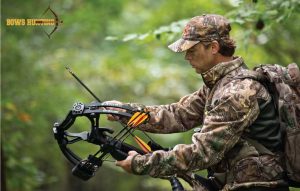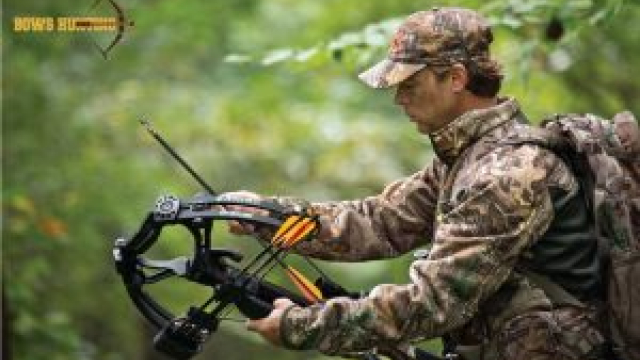Introduction
In the world of archery and hunting, the crossbow stands as a formidable weapon that demands precision, practice, and dedication to master. Whether you’re a beginner looking to embark on a new adventure or an experienced archer seeking to expand your skill set, this guide will walk you through mastering the art of crossbow training. From understanding the basics to refining your accuracy, let’s delve into the comprehensive steps that will help you become a proficient crossbow shooter.
Understanding the Crossbow
Before diving into training, it’s essential to familiarize yourself with the different components of a crossbow. A typical crossbow consists of a stock, limbs, a trigger mechanism, a bowstring, and a scope. Each part plays a crucial role in the weapon’s performance, so take the time to understand their functions and how they interact. A crossbow is a precision weapon that blends ancient design with modern technology. To harness its power effectively, it’s crucial to comprehend the various components that come together to create this remarkable tool.
At its core, a crossbow consists of several key parts, each contributing to its functionality. The stock provides stability and support, while the limbs store the kinetic energy needed to propel the arrow. The trigger mechanism releases this energy, sending the arrow flying towards its target. A bowstring connects the limbs and stores the potential energy generated when the crossbow is cocked.
One of the most crucial aspects of a crossbow is the scope, which aids in aiming. Modern crossbows often come equipped with scopes that offer reticles and magnification, allowing for precise targeting. Properly calibrating the scope to your crossbow’s specifications is essential to achieve accurate shots.Understanding these components lays the foundation for effective crossbow shooting. As you delve into crossbow training, your grasp of how these elements interact will enable you to troubleshoot issues, fine-tune your accuracy, and appreciate the intricate balance between craftsmanship and technology that defines the crossbow’s allure.

Safety First
Safety should always be your top priority for mastering the art of crossbow training. Before handling a crossbow, familiarize yourself with proper safety protocols. Always ensure that your fingers are clear of the string and the trigger while loading and unloading the crossbow. Additionally, wear appropriate eye protection to prevent any potential accidents.
Choosing the Right Crossbow
Selecting the right crossbow is pivotal to your training journey. Factors such as draw weight, overall weight, and design should be considered. Consult with experienced archers or visit a reputable archery store to get guidance on choosing a crossbow that suits your physique and shooting style.Selecting the perfect crossbow goes beyond aesthetics; it’s about finding a tool that complements your physique, shooting style, and intended use. With a wide array of options available, making an informed choice requires careful consideration.
Draw Weight: The draw weight of a crossbow determines its power and the effort required to cock it. A higher draw weight results in greater speed and force, but it might be challenging to handle for some individuals. Choose a draw weight that balances power with your physical capabilities.
Weight and Design: The weight of the crossbow can impact your comfort during extended shooting sessions and while maneuvering in the field. Consider the crossbow’s overall weight and ergonomic design, especially if you plan to hunt or participate in long practice sessions.
Noise and Vibration: Some crossbows are quieter and produce less vibration upon firing. This is crucial for maintaining stealth during hunting scenarios. Look for models with built-in dampening technology to reduce noise and vibration.
Accessories: Assess the compatibility of the crossbow with accessories like scopes, quivers, and cocking aids. A well-equipped crossbow can enhance your shooting experience and accuracy.
Budget: Crossbows vary greatly in price, and it’s important to set a budget that aligns with your expectations and needs. Remember that investing in quality often results in better performance and longevity.
Test and Consult: Whenever possible, visit an archery store to physically handle different crossbow models. Seek advice from experienced archers or professionals who can provide personalized recommendations based on your skill level and goals.
Basic Shooting Techniques
Stance and Posture: A solid foundation begins with your stance. Stand with your feet shoulder-width apart and perpendicular to the target. Keep your body relaxed yet balanced, allowing for easy maneuverability.
Loading and Cocking: Properly loading and cocking the crossbow are fundamental steps. Follow the manufacturer’s guidelines for your specific model. Use a rope cocking aid to ensure consistent cocking, reducing the risk of inaccuracies.
Aiming and Sighting: Utilize the scope to aim at your target. Align the reticle with the bullseye and ensure your eye is centered behind the scope. Practice sighting at various distances to enhance your accuracy.
Perfecting Your Skills
Practice Regularly: Consistent practice is key to improving your crossbow skills. Dedicate time to shooting sessions, focusing on your form, aim, and release technique. Begin at close distances and gradually increase the distance as you progress.
Focus on Form: Maintaining proper form is essential for accuracy. Pay attention to your grip, ensuring it’s firm but not overly tight. Keep your shoulders relaxed, and use your non-dominant hand to support the stock.
Fine-Tuning Accuracy: Experiment with different arrow types and weights to find the optimal combination for your crossbow. Adjust the scope’s windage and elevation settings to align with your shooting tendencies.
Advanced Techniques
Shooting from Different Positions: For mastering the art of crossbow training, practice shooting from various positions, such as kneeling, sitting, or even lying down. This prepares you for real-world hunting scenarios where a traditional stance may not be feasible.
Judging Distances: Develop the ability to estimate distances accurately. This skill is crucial for adjusting your aim when hunting different game animals in diverse environments.
Overcoming Target Panic: Target panic can hinder your performance. Combat it by practicing controlled breathing, mental focus, and a deliberate release. Visualization techniques can also help in building confidence.
Seeking Expert Guidance: Consider enrolling in archery classes or seeking guidance from experienced crossbow shooters. Their insights and feedback can provide valuable pointers to enhance your skills further.
Conclusion
Mastering the art of crossbow shooting is a rewarding journey that requires patience, dedication, and continuous learning. By understanding the fundamentals, practicing regularly, and refining your technique, you can elevate your crossbow skills to new heights. Remember, becoming a skilled crossbow shooter is not just about hitting the target consistently; it’s about embracing the challenge and embracing the thrill of the hunt.



